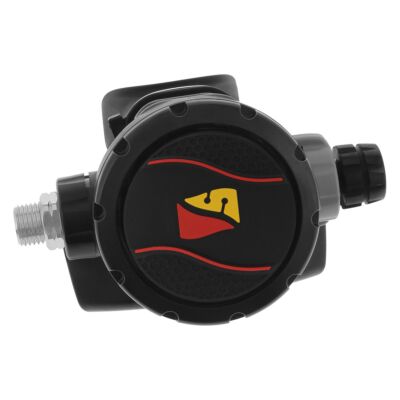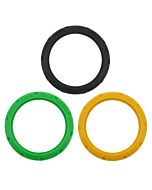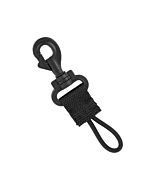Dive Rite XT2 Second Stage
- Venturi assist directs airflow to the mouthpiece for smooth inhalation
- Pneumatically balanced downstream design
- All internal moving parts are suitable for warm and cold-water
- Easy grip dive/pre-dive switch avoids free flow and is suitable for use with gloves
Dive Rite XT2 Second Stage
The reversible design of the XT2 can be configured to accept the hose from either the diver's right or left side and may be ordered in either configuration. The XT2 can be easily re-configured for either side by anyone qualified to service Dive Rite regulators.
When purchased separately, individual regulator stages remain as factory configured by the manufacturer and final integration must, out of necessity, become a customer responsibility.
The Dive Rite XT2 Balanced Second Stage Regulator is a pneumatically balanced downstream design featuring excellent performance. Venturi assist directs airflow from the valve directly to the mouthpiece producing smooth inhalation. A compact yet easy grip dive/pre-dive switch avoids free flow at surface and is suitable for use with gloves. With the adjustment know the diver can fine tune cracking pressure so breathing resistance matches diver personal preference. A unique deflection ring works to maximize performance while deterring free flow and all internal moving parts are Teflon® for cold-water user. The XT2 also includes a long bite orthodontic mouthpiece to reduce jaw fatigue.
reversible design of the XT2 can be configured to accept the hose from either the diver's right or left side and may be ordered in either configuration. The XT2 can be easily re-configured for either side by anyone qualified to service Dive Rite regulators.
| Brand | Dive Rite |
|---|---|
| SKU | DR-RG5250A |
| Weight | 2.000000 |
Customer Reviews
Do You Know Your Right From Your Left?
Modular valves come in right-hand and left-hand designs, referring to the side of the valve handwheel, not to which direction the valve opens. Some regulator first stages, intended for use in pairs with doubles manifolds, are also available in right and left versions. Even some regulator second stages are available in right and left configurations, referring to the side the LP hose connects. This can be confusing because there is not industry-wide agreement on the perspective from which these devices are viewed: from the perspective of the diver themselves or from the perspective of someone facing the diver.
- For example, Dive Rite assigns left and right from different perspectives depending on the device. Valves are assigned left and right with your face toward the valve opening. If the valve is on and blowing air in your face, then you reach out with your left hand and can touch the valve handwheel knob it is a left handed valve. Thus Dive Rite says that the typical standalone valve is left-handed. Yet, their XT2 regulator is the opposite, with the hose entry on the common side assigned as right while the hose entry on the uncommon side is assigned left.
- Thermo and Mares both assign left and right from the perspective of the diver with their tank(s) on their back. If the Thermo valve is on and blowing air on the back of your neck, then when you reach back with your right hand and can touch the valve handwheel knob it is said to be a right handed valve. Thus Thermo says that the typical standalone valve is right-handed. If the Mares regulator stage is one of a doubles pair and specifically designed to be mounted on the divers right valve post, then it is right-side. We are not sure what to call the unique Mares VR 2nd stage.
- DGX Premium Valves use the same method to assign left and right as Thermo does so a DGX Premium typical standalone valve is right-handed. However, because of the possibility of confusion we prefer to use the terms Typical and Uncommon to indicate the side of the handwheel. Currently we don't offer regulators that have an uncommon orientation.
The uncommon orientations can be very useful for hose routing in stage and sidemount applications, where divers wear cylinders clipped to their side rather than their back. However, sometimes uncommon orientations can be more than just confusing. While both right- and left-hand valves always close and open using the "righty-tighty, lefty-loosey" rule, this can cause problems when modular valves are mounted on single tanks. Well-meaning individuals who fail to notice a valve with the handwheel on the uncommon side and reach to check "air is on" might actually close a valve believing they are doing the diver a favor of opening it. Second stages with uncommon hose orientations have been known to be inserted in the mouth 'upside down', which can cause them to breath very wet or dislodge the mask. To prevent this from happening, it's a good idea to call uncommon configurations to the attention of divemasters and buddies.







